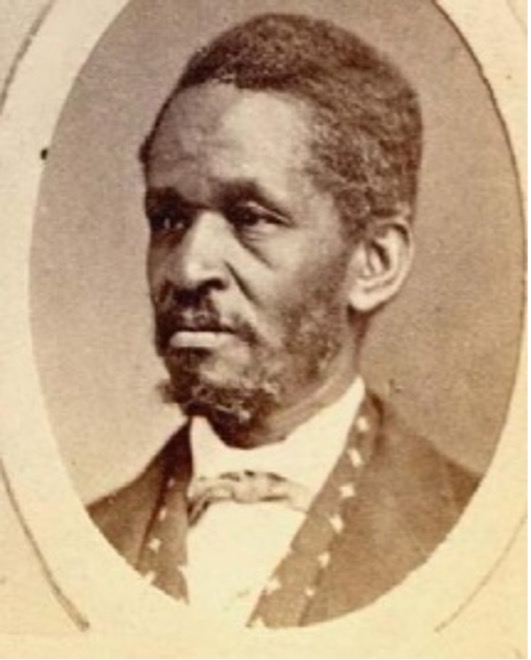
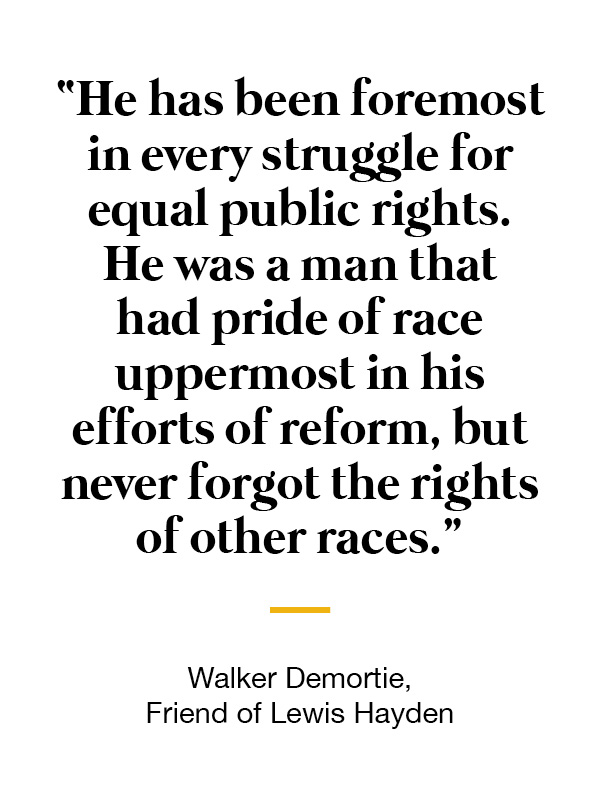
Born enslaved in Kentucky under the name Lewis Grant, Lewis Hayden (1811-1889) spent the first decades of his life in slavery. On a visit to Boston, Harriet Beecher Stowe interviewed Hayden, documenting his life in bondage. His story illustrates the cruel separation of families by slave traders. Despite enduring this cruelty, Hayden had the courage not only claim his freedom, but to help other claim theirs.
Slavery and Family Separation
After Hayden’s father was sold at auction and his mother became mentally ill as the result of abuse, his enslaver sold off Hayden’s siblings: “When [the enslaver] was going to leave Kentucky for Pennsylvania, he sold all my brothers and sisters at auction. I stood by and saw them sold. When I was just going up on the block, he swapped me off for a pair of carriage horses...It was commonly reported that my master had said in the pulpit that there was no more harm in separating a family of slaves than a litter of pigs...”
Later, Lewis Hayden married Esther Harvey and the couple had two children. Then Henry Clay, a prominent stateman, purchased Esther and one child. Later Clay sold them and Hayden never saw his wife and child again. Hayden’s other child died in Kentucky.
In time he remarried, but the threat of separation still loomed over his family. Hayden and his wife, Harriet, found the courage to risk their lives, and that of their son, for the chance to live as a family in the safety of freedom. With the help of abolitionists Delia Ann Webster and Calvin Fairbank, Hayden, Harriet, and their son escaped. Fairbank, hired a carriage and driver. Lewis and Harriet posed as servants, “or passed as white lady and gentleman, veiled and cloaked.” Harriet’s son hid under a seat. Webster and Fairbank were both arrested and found guilty for their participation in the escape. Webster was pardoned but Fairbanks was sentenced to 15 years. The Hayden’s passed through Ohio to Detroit, and made it to Canada where they changed their name to Hayden.
Boston and the Underground Railroad
The Hayden’s later settled in Boston in 1846, where Hayden established a successful clothing store. Hayden gained some degree of wealth and raised $650 to purchase his freedom and to help Fairbank get out of prison. A prominent figure in Boston’s Underground Railroad network, Hayden assumed numerous duties in the local abolitionist movement. He served on the executive committee of the Boston Vigilance Committee, and the Hayden home became a meeting place for abolitionists and a safe house for freedom seekers. The Hayden’s sheltered hundreds of people who were journeying to freedom
Notably, Hayden protected William and Ellen Craft, who had been the subject of warrants for their return to slavery. Sheltering William Craft, Hayden barricaded his doorway and threatened slavecatchers if they pursued the Crafts. In two instances, Hayden led raids on the Boston Courthouse; first in the rescue of Shadrach Minkins in 1851 and second in the unsuccessful attempt to free Anthony Burns in 1854.
Hayden played other significant roles in Boston. He presided over numerous community meetings, particularly those in response to the Fugitive Slave Act. He worked to integrate Boston Public Schools, and served as Messenger to the Secretary of State, a politically appointed position which gave him access to many high-profile leaders in state government.
Abolition and Suffrage
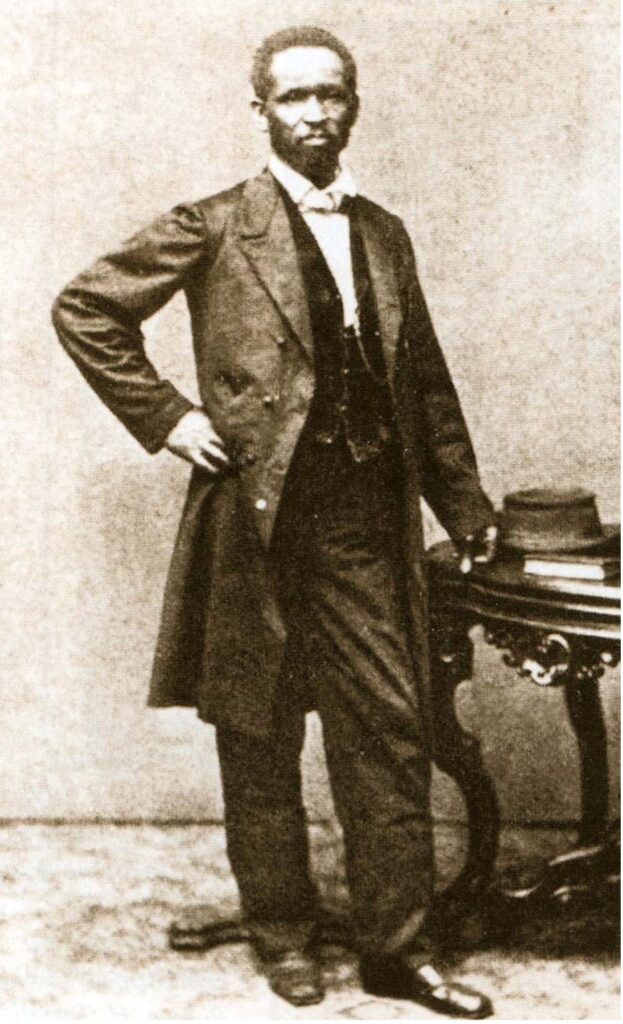 During the Civil War, Lewis Hayden recruited Black soldiers for the Massachusetts regiments, including the Massachusetts 54th Infantry Regiment. Following the Civil War, Hayden served as one of the first Black members of the Massachusetts General Court, an elected representative in the state legislature. As a representative, Lewis Hayden lent his support in the fight for women’s suffrage, serving on the Committee on Woman Suffrage and advocating for legislative measures to provide women with the right to vote. Remembering the work of women in the abolitionist movement, Hayden recalled, "My race can never repay the debt we owe to such as these [suffragists]. I should be indeed an ingrate, if I did not work and vote for the enfranchisement of women."
During the Civil War, Lewis Hayden recruited Black soldiers for the Massachusetts regiments, including the Massachusetts 54th Infantry Regiment. Following the Civil War, Hayden served as one of the first Black members of the Massachusetts General Court, an elected representative in the state legislature. As a representative, Lewis Hayden lent his support in the fight for women’s suffrage, serving on the Committee on Woman Suffrage and advocating for legislative measures to provide women with the right to vote. Remembering the work of women in the abolitionist movement, Hayden recalled, "My race can never repay the debt we owe to such as these [suffragists]. I should be indeed an ingrate, if I did not work and vote for the enfranchisement of women."
Hayden’s Legacy
Lewis Hayden died in Boston on Sunday morning April 7, 1889. His passing was front- page news in the New York Times as well as in the Boston Globe, Boston Herald and Boston Evening Transcript. Leading nineteenth century reformers attended the funeral including Frederick Douglass, and women’s rights champion Lucy Stone. The Governor of Massachusetts, Mayor of Boston, and Secretary of the Commonwealth felt it important to participate. A historical marker at his Beacon Hill home tells part of the story: “A Meeting Place of Abolitionists and a Station on the Underground Railroad.”
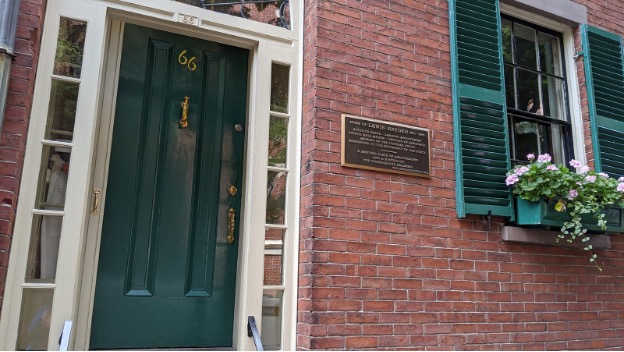
Lewis and Harriet Hayden House NPS
Hayden’s courage was notable, and he was often described as a “man of action.” Throughout his life, he chose to fight for freedom, for himself, his family, and others.
Learn more about Lewis Hayden:
- https://www.sec.state.ma.us/mus/pdfs/Lewis-Hayden.pdf
- https://www.nps.gov/people/lewis-hayden.htm
- https://www.boston.gov/news/bostons-own-underground-railroad-conductors-harriet-and-lewis-hayden
Sources
- https://www.sec.state.ma.us/mus/pdfs/Lewis-Hayden.pdf
- https://www.nps.gov/people/lewis-hayden.htm
- https://nkaa.uky.edu/nkaa/items/show/13
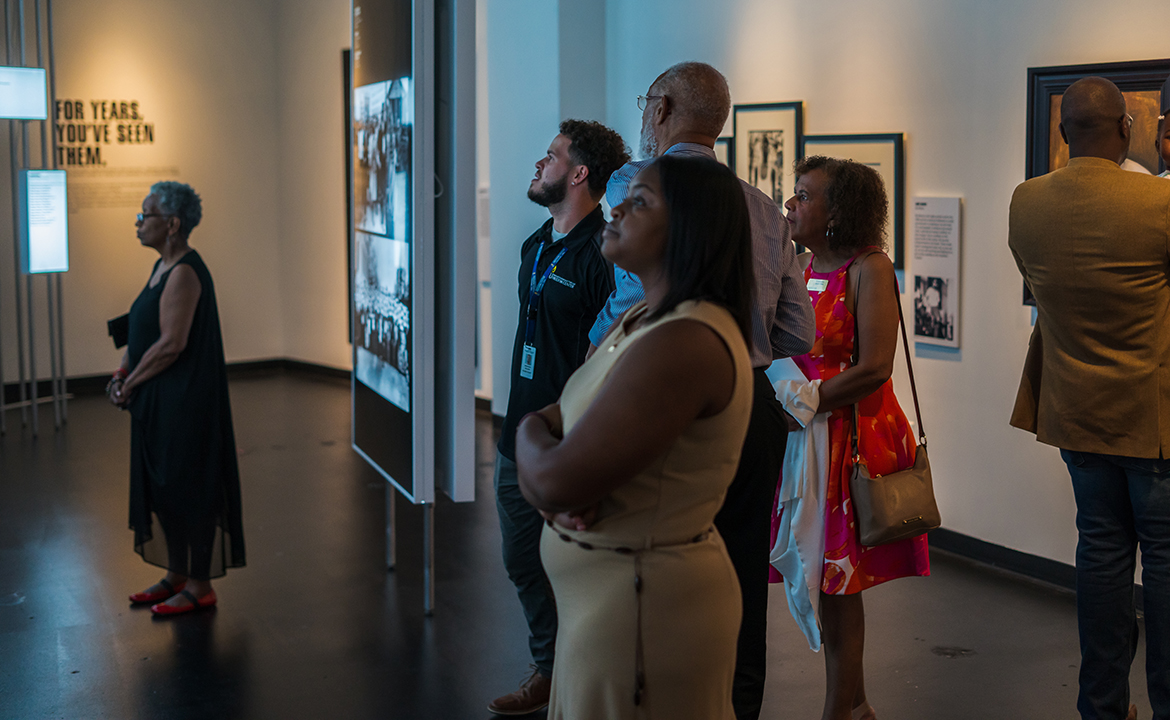
Freedom Heroes
Discover more courageous individuals that have taken a stand for freedom and justice.